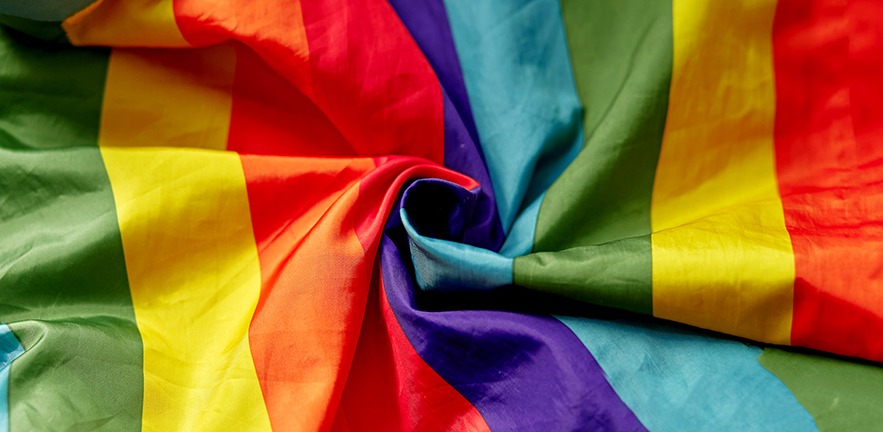Diversity has soared to top of the agenda for businesses across the board in recent years, and for good reason; diverse teams have been shown to perform up to 30% better than their less diverse counterparts, according to research by Gartner, while 83% of millennials said they felt “actively engaged” in their work when their company supported diversity and inclusion (D&I) initiatives.
Harvard Business Review meanwhile found a correlation between diversity and innovation, with more diverse teams bringing fresh perspectives and experiences.
Yet while many companies have set targets for gender and ethnic diversity, not all of them have done the same for LGBTQIA+ groups; research in 2019 by Involve – a network that champions diversity and inclusion – found that only 65% of FTSE 100 companies mentioned LGBTQIA+ inclusion in their annual reports.
LGBTQIA+ candidates are often underrepresented, especially in senior positions; there are currently only four publicly out LGBTQIA+ CEOs in the Fortune 500, and none in the FTSE 100. And while LGBTQIA+ women represent 2.3% of entry-level roles, they make up only 1.6% of managers, according to research by McKinsey.
This isn’t to say progress hasn’t been made. In recent years, many companies have put policies and resource groups in place to support greater diversity. In the Human Rights Campaign’s annual Corporate Equality Index 2020, 92% of employers had a set of practices in place to support LGBTQIA+ employees, while 88% offered trans-inclusive benefits. Many others have got behind events such as Pride to show support.
But there are still challenges; research by the CIPD found that LGBTQIA+ employees were more likely to face conflict in the workplace than their heterosexual colleagues, while a survey by BCG found that 75% of those asked had reported at least one negative interaction relating to their LGBTQIA+ identity. These ongoing challenges highlight the need to continue to push for greater equality and openness in the workplace – but how?
We spoke to two MBA alumni from the Cambridge Judge Business School (CJBS) to get their advice for both companies and employees on how to foster a more diverse, inclusive, and open environment.
Be genuine

First and foremost, any organisation’s purpose needs to be genuine, says Simon Schwartz, Senior Product Marketing Manager at Synthesized. Simon graduated from the MBA programme in 2020 and was co-chair of Pride@CJBS during his time at Cambridge Judge, launching awareness campaigns, a speaker series, and a partnership with Reaching Out MBA, which provides scholarships to the LGBTQIA+ community.
“I think any organisation that just engages in tokenism and doesn’t actually kind of walk the talk will be found out,” he says. “With platforms like Glassdoor, it’s easy for potential candidates to tell what’s real and what’s not.”
Sam Chong, co-founder of Pride@CJBS society and now a Managing Strategy Consultant at IBM, adds that having a clear goal – rather than just reporting on data as a tick-box exercise – is key. “Many companies report on social metrics such as gender, but what is not usually clear is how to improve those metrics,” he says.
“That boils down to clarity on what diversity means for that organisation, what action it drives and why it’s a business cause.” Only when a company has clarity on its purpose can it put in place useful practices that support LGBTQIA+ and other diverse employees.
Encourage dialogue from the top down
“Once that genuine purpose is in place, implementing it should involve everyone,” says Simon. “If you’re a company of any size, the first thing you can do is have conversations with your team about what they need, so the company can be an ally.

“Those conversations might feel uncomfortable, but I feel like if somebody just asked, ‘what can we do to make sure that you feel supported as an LGBTQIA+ person here?’ that would be a great place to start. I think it can uncover things the organisation doesn’t fully understand.”
That dialogue can in turn help companies establish relevant policies that get buy-in from every level, says Sam. “Companies can’t just impose diversity events from the top down without a sense of reality of what’s happening on the ground,” he says. “Employees should feel like they’re part of the overall plan, whether through surveys or other means, to get a sense of where the company is really at in terms of diversity.”
Offer resources and affinity groups
Affinity groups can be one way of opening up these conversations. Many organisations have already put these in place; 94% of businesses evaluated in the Human Rights Campaign’s annual Corporate Equality Index 2020 were found to offer an employee resource group or diversity council with an LGBTQIA+ division.
But how those groups are used and what action they take are key to driving meaningful change, says Sam.
“I think there’s a huge educational element these groups can take on,” he says. “For example, during LGBTQIA+ month, they could do a themed quiz or something fun, just to let people know a bit more about LGBTQIA+ culture in an informal way.
“They can also help create an environment where people are just happy to ask questions, because I think sometimes people are just afraid. I think it’s up to us as a community not to respond aggressively if someone uses the wrong term or something. I think being open to questions is the best way to help others feel like they can reach out, and that’s how you bring them on your side.”
Highlight role models
Creating this open environment starts with having a more diverse leadership, of course – and that starts with having more LGBTQIA+ employees in the first place, says Sam.
“There are so few managers that are LGBTQIA+ in big corporations, so to get to the board level it’s even harder,” he says. “There’s almost a need to create more opportunities below in order to have enough people to be picked for those senior positions.”
Once those candidates are there, he says mentors are key to inspiring confidence – as is shining a light on LGBTQIA+ people who are already in senior positions. “When there are positive examples, they should be highlighted because it can allay fears that some LGBTQIA+ people are trying to grapple with,” he says.
“I came from a very conservative background in Malaysia and growing up I always had the feeling that gay people didn’t really succeed in the corporate world. But I had mentors very early on in my career who were very helpful and seeing LGBTQIA+ people in these positions gave me a lot more confidence and the belief that I could progress.”
Avoid reverse discrimination
But organisations should be wary of just creating tick-box exercises that discriminate against other groups, says Sam.
“You obviously don’t want to create a situation where it’s reverse discrimination – where you actively discriminate against a straight person,” he says. “I’m not saying just put someone into a board because they’re LGBTQIA+, because that kind of defeats the purpose.”
Ultimately supporting diversity means welcoming and accepting people for who they are, rather than focusing on any one specific metric.
“The fundamental values should be that we just want you to be yourself,” he says. “Companies should be saying, whoever you are, you can still find a place in this organisation. It’s just sending the same message to everyone that we want you to be yourself.”
Cater to consumers
Ultimately, businesses that don’t embrace diversity in all forms are likely to struggle to compete in the coming years – especially as Gen Z comes to dominate. “Consumers are demanding that companies align with their beliefs,” says Simon. “They’re saying, I need to know that you as a brand are aligned to my beliefs, so that I support you.”
A report by LGBT Great– which specialises in diversity in the investment industry – found that 1.8% of Gen Z identify as transgender, higher than any other generation, and 94% of trans and non-binary people said they would only work for a company that was visibly supportive of trans and non-binary employees.
A survey by consumer research platform Quantilope meanwhile found that 76% of Gen Z said they believed diversity and inclusion generally was a key topic for brands to address (compared to only 46% of Baby Boomers).
With these issues clear priorities for the upcoming generation, organisations that don’t start to take more action in the coming years will likely find themselves falling behind. It’s up to both leaders and their employees to start driving change now.


